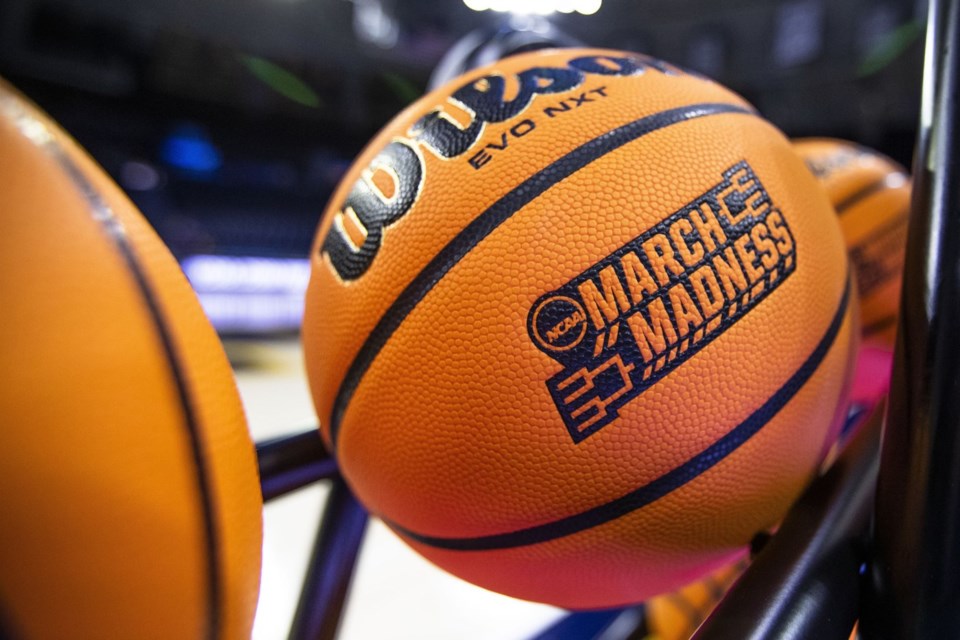Attorneys handling the $2.8 billion NCAA settlement proposed a massive do-over Wednesday when it comes to roster limits, offering athletes who lost their spots a chance to play without counting against the new caps for as long as they have eligibility.
Under court order to come up with an updated plan, the attorneys in court filings suggested that schools compile lists of all the players they cut in anticipation of the settlement being approved — a number that certainly could be in the hundreds and perhaps far more.
Those “Designated Student-Athletes,” as they're called in the new legal filing, can be invited back to compete for roster spots — no guarantees — or go to new schools.
Either way, those athletes they won't count against the new roster limits that are coming under the plan unveiled last fall and given initial approval by U.S. District Judge Claudia Wilken last October.
The proposal would also give the exemption to high school recruits who were promised spots that were later rescinded and would last for as long as those players are eligible in college.
Wilken has already signed off on the key components of the settlement, which includes allowing each school to share up to $20.5 million each year directly with their athletes and the more than $2.7 billion in back pay that will go to players who said the NCAA and five biggest conferences wrongly kept them from earning name, image and likeness money.
The latest proposal capped a two-week scramble after Wilken sent attorneys for both sides back to the negotiating table, saying the roster limit details of the plan as written were unacceptable.
The plan calls for replacing scholarship limits (85 for football and 9.9 for men’s wrestling, for example) with roster limits (105 for football, 30 for wrestling). A school can offer scholarships to every player on a team, but that will cost money and most predict that walk-ons or partial scholarship athletes will be left out.
Wilken clearly sympathized with the hundreds of players who lost roster spots as schools began preparing to implement terms of the settlement. About a dozen told their stories during an April 7 hearing.
Wilken asked lawyers to rework that part of the deal. The NCAA’s first response to Wilken’s request — which included the idea of “grandfathering in” current players to their roster spots — was to change nothing, arguing that undoing roster moves already in play would create more turmoil in an already chaotic process. Wilken told them to do it anyway or put the whole plan at risk.
The plaintiffs' attorneys said they did Wilken one better, not only giving schools a chance to bring back players they cut without it counting against their limit, but putting the exemption in play for a new school, as well.
“Plaintiffs believe that these changes to the settlement agreement exceed the protections that the court requested,” their court filing read.
The attorneys noted there is no guarantee that the athletes will win their roster spots back.
“While defendants insisted that the changes to the settlement agreement recognize that individual schools and their athletics departments retain discretion to independently determine which athletes will be on their rosters, that has always been the case; and it remains unchanged whether or not there are roster limits," they wrote. "The revisions to the settlement agreement ensure that class members who have or would have lost roster spots or promised roster spots as a result of the new roster limits will be in the same position as they would have been in if roster limits were never implemented, i.e., roster limits do not apply to them.”
The judge is expected to give opponents to the plan a brief window to file updated objections before her final decision. Steve Berman, co-lead counsel for the plaintiffs, predicted earlier this week that those objecting to the plan will not be satisfied with the new proposal.
The clock is ticking for the NCAA and its 1,200 member schools that have more than 500,000 athletes on various teams. Terms of the settlement were supposed to go into effect July 1 and football practice starts soon after.
___
AP college sports: https://apnews.com/hub/college-sports
Eddie Pells, The Associated Press



